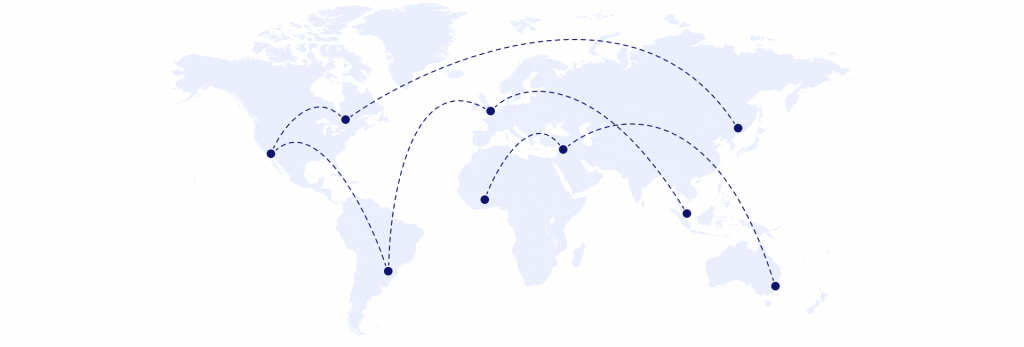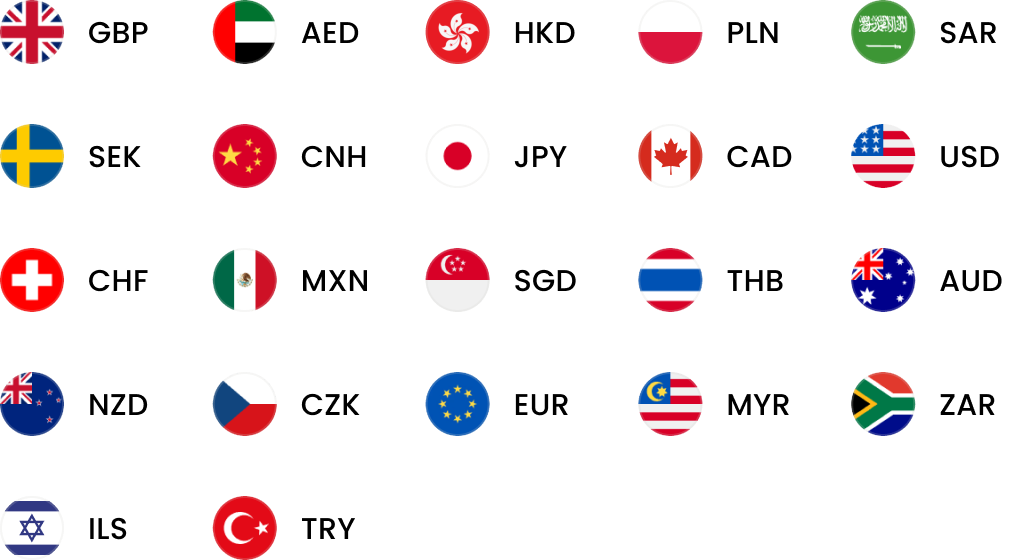Consumer trends in China for 2022 and 2023
We break down the what, where and how of Chinese consumer trends so you can enter 2022/23 ready to grow your revenue.

What does the future hold for consumer trends in China? Unlike much of the rest of the world, China is rebounding strongly from the economic impacts of Covid-19.
The Chinese economy grew by 8.1% in 2021, according to reports from Bloomberg. But what about 2022 and 2023? Specifically, how are demographic and economic forces combining to shape consumer trends in China?
We thought we’d take a look at how Chinese shopping habits are transforming so you can best position your business to meet them. We’ll also go over some budding consumer and product categories you could consider using for future growth opportunities.
Consumer trends in China coming in 2022/23
Amidst trade negotiations and a modernising economy, Chinese consumer tastes are evolving. While some consumer cohorts are becoming frugal, others are upscaling to premium and better-value goods.
Your businesses will need to capitalise on the trends outlined below to adapt to the shifting trading landscape and consumer tastes.
How is commerce changing? New Chinese consumer habits
Digital is in
E-commerce will continue to dominate in China in 2022 and 2023.
With over 700 million buyers — or over 58% of its population — China had the largest digital consumer population in the world in 2020. If this wasn’t enough, recent global events have intensified China’s digital buyer penetration: accelerating the existing digital transformation of online businesses and inspiring the transformation whole-cloth in others.
Tech firms like Alibaba experienced a near-40% revenue surge as consumers turned to online shopping. As the only medium capable of facilitating purchases while social distancing measures were in place, e-commerce grew.
Even traditionally offline businesses explored digital transformations of their own, as they were keen to make customers comfortable. For example, medical consultations and property viewings were increasingly conducted over live video streams.
As a result, Chinese consumers were more comfortable than ever navigating digital business relationships in 2021. In 2022/23, businesses that deliver a seamless online customer experience and prioritise digital optimisation and transformation should expect to thrive.
Is physical retail still relevant?
While e-commerce is the de facto purchase method for over 50% of Chinese consumers, physical retail still has a place in the future of Chinese purchasing habits.
An exciting new retail model is poised to take over China, especially in product categories like fashion. The ‘new neighbourhood store’ is a place where connection comes first, and sales come second. Physical storefronts are transformed into intimate brand spaces, inviting shoppers to sample innovative product displays and lifestyle services. The result is a fresh retail-social hub that also acts as a pick-up point for online purchases.
Though ‘traditional’ retail stores still feature across China, digital plays a large part in the consumer equation. China pioneers a blended customer experience, leading the world in mobile payments — even if purchases are conducted in physical stores. Therefore, make sure you’re delivering an optimised customer experience, whether on or offline.
Social commerce: word of mouth like you’ve never seen it
Social commerce, where social media acts as a direct sales platform, is a growing sector of UK and US e-commerce. However, social commerce has been a mainstay in China for years and is now more important than ever.
Like its online buyer population, China is home to the world’s largest social media user-base, with each person spending around 4 hours a day online. As a result, social commerce is a major Chinese pastime, generating around $300 billion (USD) each year.
Consumers can shop by tuning in to live streams with influencers — similar to televised shopping channels — or simply by scrolling through posts. Purchases are often handled in-house by the social media app itself, creating an effective sales funnel and eased purchase experience.
Social commerce in China is predicted to grow by over 18% in 2022. Therefore, brands selling to Chinese consumers absolutely must create a social commerce strategy to compete in the immediate future. Savvy social media sellers targeting Chinese consumers should look at selling on Weibo through marketplaces like Tmall Global, or Pinduoduo which targets customers using the WeChat social media platform.
- Open 20+ local currency accounts and get paid like a local
- Pay suppliers, partners and staff worldwide in 100+ currencies
- Collect payments for free from 130+ marketplaces and payment gateways, including Amazon, Etsy, PayPal and Shopify
- Save with competitive exchange rates on currency conversions and transfers
- Lock in exchange rates for up to 24 months for cash flow certainty
Who is spending what? Emerging Chinese consumer categories
So far, we’ve covered how customers are buying, but what about who? Demographic changes are producing new consumer demands and consumer trends in China.
Chinese luxury customers: Savvier than you think
Around 1.4 million people in China have an average annual income of $500,000 (USD). This wealthy cohort is the primary driver behind China’s demand for premium goods. However, even among the middle and working classes of China (where incomes range between $5,000 and $10,000 (USD) per month on average), high-end goods are becoming more popular as consumers seek quality and products that reflect their upwardly mobile lifestyle.
In general, Chinese consumers are becoming more selective in the products they buy, investing in quality products they can use for longer. As we enter 2022/23, businesses should emphasise the standard of their goods or services, and the value customers can gain from brands in their marketing.
Gen Z: A new type of consumer
China’s youngest consumer cohort is debuting in the market, so what does this mean for your business?
Chinese Gen Z’ers, born somewhere between 1997 and 2010, make up around 15% of the Chinese population. Note that this number changes depending on where you draw the generational boundary. Nevertheless, like their peers across the globe, they’re buyers who prefer online shopping and use credit purchases to bridge budget gaps. However, they’re also more brand-loyal.
Survey data indicates that young Chinese consumers want customised offers and high-quality goods. Businesses that are able to satisfy this dynamic consumer group can expect to enjoy enduring brand loyalty.
Lower-tier cities: Areas for growth
Cities like Mianyang, Yancheng, and Zigong will grow as they develop economically. As a result, incomes for middle class consumers are increasing faster in these regions than in China’s main coastal cities like Beijing and Shanghai.
Businesses approaching 2022/23 should consider using sophisticated online advertising techniques to target consumers in these areas and grow their brand awareness.
What’s popular? Growing product categories
Regardless of who’s got the money to spend or how they use it, every business wants to know the next “it” item. We’ve identified some of 2022/23’s most lucrative expanding product categories below.
Health and wellbeing
Like the UK, China has a considerable ageing population, with around 223 million people born before 1965. This cohort is keen to maintain their health and spend the money to do so. Older Chinese consumers strongly prefer all-natural products, so whether you’re offering nutritional supplements or home remedies in 2022/23, make sure they’re free from artificial chemicals.
Younger consumers are equally concerned with their health, albeit from a different angle. Gen Z consumers alone make up a quarter of China’s gym users and have driven growth in healthy foodstuffs like low-sugar drinks and high-protein meal replacements.
Homeware and lifestyle goods
The average Chinese consumer currently spends around half of their income on home and food expenses. As the economy modernises and consumers gain more free time to socialise, their homes and lifestyles are taking priority.
Popular goods entering 2023/23 include personal care items (like makeup and fragrances), fashion (especially within younger consumers who favour domestic brands as part of a “China-chic” movement), and homeware like appliances and furnishings.
How to improve your customer experience in Chinese markets
Businesses selling to Chinese consumers can deliver a better customer experience by showing prices in China’s own currency, the renminbi. Customers don’t have to convert currency values and can understand the value of their purchases better.
Until recently, businesses had to convert transactions to and from the US dollar using complicated processes involving overseas bank accounts. However, currency transfer providers like WorldFirst offer businesses innovative solutions to handle currency transfers more easily.
By using a WorldFirst International Collections Account, your small businesses can access fast and affordable transfers on more than 60 different currencies.
WorldFirst can also help you transfer money in hours, not days. All you have to do is meet the cut-off times and WorldFirst handles the rest.


How to sell on WeChat marketplace: A guide for global brands
Interested in selling on WeChat? We break down what you need to know about how to get started with selling on China’s biggest marketplace.
May / 2025
What is a China export licence (and what are the requirements?)
Learn about what a China export licence is and what the requirements are when exporting goods from China to the UK.
May / 2025
Why does China have two currencies?
China has two currencies, CNY and CNH. Learn about the differences between the two and why it matters when doing business with China...
Apr / 2025WorldFirst articles cover strategies to mitigate risk, the latest FX insights, steps towards global expansion and key industry trends. Choose a category, product or service below to find out more.
- Almost 1,000,000 businesses have sent USD$300B around the world with WorldFirst and its partner brands since 2004
- Your money is safeguarded with leading financial institutions


































































